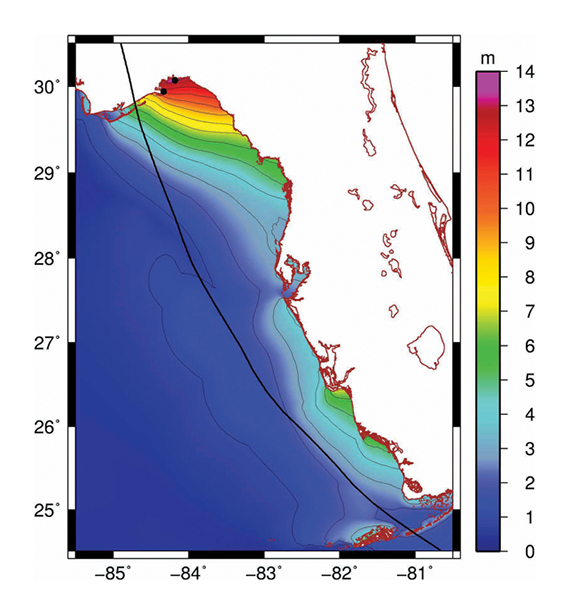The observational hurricane record for northwestern Florida is just 160 years long, yet hurricane activity is known to vary strongly over thousands of years. Digging back into the prehistoric hurricane record, Lin et al. found that scientists’ reliance on such a narrow slice of observations has led them to severely underestimate the frequency with which large hurricanes have slammed into Florida’s Gulf Coast.
According to historical records, northwestern Florida gets hit by a hurricane packing a 5-meter storm surge every 400 years. Incorporating long-term paleohurricane records, the authors found that the frequency of such a storm is actually closer to every 40 years.
When strong storms batter the shore, waves can carry sediment far inland. Digging down into the sediment record, researchers can reproduce the occurrence of past storm surges. Using a hurricane model and storm surge sediment observations, the authors calculated the intensity and frequency of past hurricanes in Florida’s Apalachee Bay. They found that although the frequency of hurricanes hitting the Gulf Coast has remained relatively constant over the past few thousand years, the storms’ average intensities have been, at times, much greater than during the past 160 years.
Using their paleohurricane storm surge observations, the authors suggest that, historically, northwestern Florida would see a storm surge of 6.3 meters every 100 years, 8.3 meters every 500 years, and 11.3 meters in a worst-case scenario event. A storm surge of 8 meters, they say, would push tens of kilometers inland.
The authors suggest that assessments of hurricane risk in other coastal regions may also be biased by relatively short observational records, although the direction and magnitude of that bias is not obvious. (doi:10.1002/2014JD021584)
—Colin Schultz
© 2014. American Geophysical Union. All rights reserved.
© 2014. American Geophysical Union. All rights reserved.

